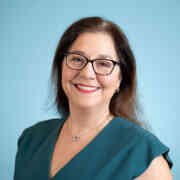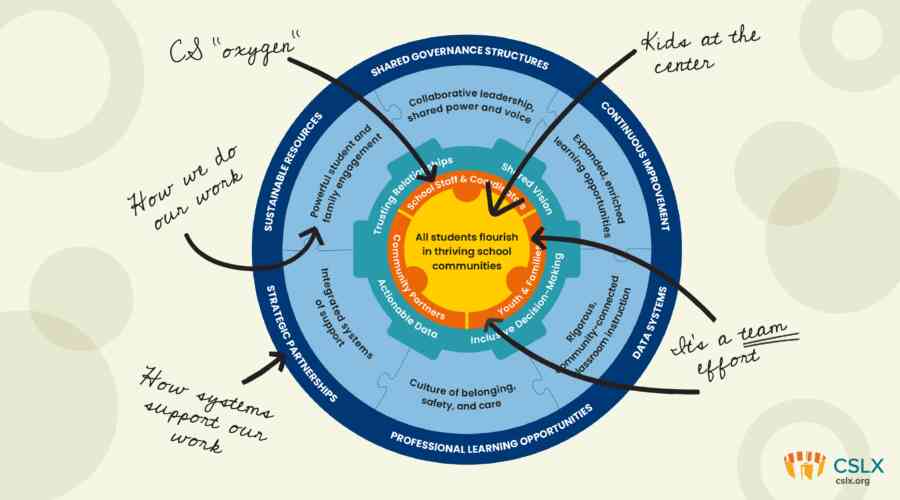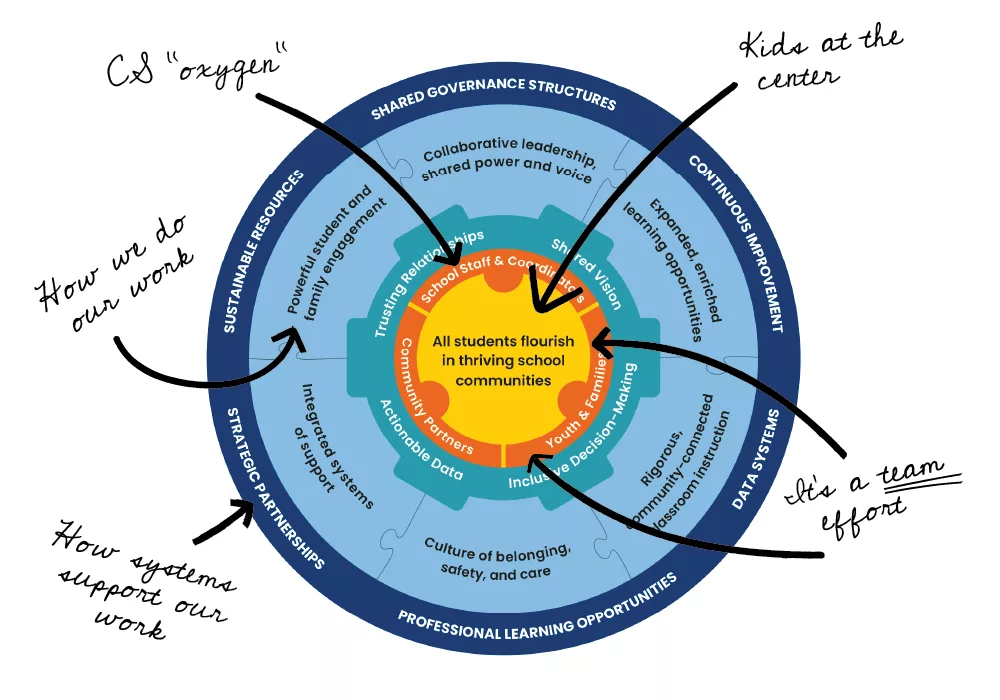The name of a funder does not a community school make


The CS Essentials Framework, or as we like to call it, "The Wheel."


The CS Essentials Framework, or as we like to call it, "The Wheel."
Want to keep up with Melissa’s writing? Sign up to get the Sticky Notes newsletter delivered to your email inbox.
The California Community School Partnership Program (CCSPP) offers an unprecedented opportunity for districts, schools and counties to invest in community school development. But, it’s not our first time at the rodeo.
Before the CCSPP, before the Federal Full-Service Community Schools grants, and before California’s Local Control Funding Formula gave schools and districts more flexibility around how they used funds, schools and districts were doing whole-child, and whole-systems, community school work. Teams were implementing many different elements of the community school strategy, and for many, this is “how we’ve always done things.” To put it simply, community schools are not new; they have taken root across the state long before – and alongside – the CCSPP.
Centered on creating schools where all students flourish and thrive, the Community Schools Essentials Framework – or as we like to call it, “The Wheel" – outlines the different, necessary components for CS work to take hold and last. When aligned in this way, elements of The Wheel function not as departmental silos or stand-alone programs, but as a comprehensive whole.

Take a look at “The Wheel” above. Do you see your work represented? Does your role bring some of these pieces together? Do you see areas of growth in your work so that it can?
If not, consider this. CS development – the building of these skills and capacities and the work of solidifying the infrastructure that supports CS work – happens over time. It’s developmental in nature. There will be times that feel like two steps forward, and times that feel like a few steps back. Forward momentum – fundamentally changing how people do their work – takes time.
A lot of schools – for a lot of years – have been doing this work.
They’ve been creating shared leadership structures. Gathering and analyzing data to understand the experiences of students and families connected to the school in order to dig into the root causes of obstacles to learning.
They’ve been thinking creatively about partnerships and embedding community partners in schools – not just as vendors or program providers but as equal stakeholders in student success.
They have someone whose job it is to keep the wheel turning (a Community School Coordinator, in other words).
Do they call themselves “community schools?” Maybe. Are they getting funding specifically designated to support community school development? Sometimes, but not always. Are they functioning as community schools? In some or in many ways, YES.
So, my point? The name of a funding source does not a community school make. And, a rose by any other name is still a rose. Whether you’ve been doing this kind of work for a long time, called your initiative something else, and are now seeing how it connects into the community school strategy, or you undertook CS work and named it as such all along, you’re doing community school work. It’s not the label that matters, it’s the work.
For those of you who may see your work reflected in the CS Essentials Framework (a.k.a. “The Wheel”): show it to your colleagues. Get their take. Talk about it. And make a plan to strengthen the areas where you see community school work reflected in your school or district. What could that look like?
And if you want some resources to support your CS development, get in touch. We’d love to help.
Just because you haven’t been calling yourself a community school doesn’t necessarily mean you haven’t been doing the work – and shouldn’t access resources to support it. A rose by any other name, right?
Melissa
P.S. I’m just going to drop this here for additional inspiration.

Melissa Mitchell is a community school practitioner with more than fifteen years in the field. Her experiences range from Community School Coordinator to leading the Federation for Community Schools, a Illinois-wide capacity building and policy organization. Melissa has supported community school development in a variety of ways, from providing coaching and direct technical assistance to schools, districts, practitioners and community partners to working with legislators and policymakers to develop supportive-state level policies that advanced community school development across Illinois.